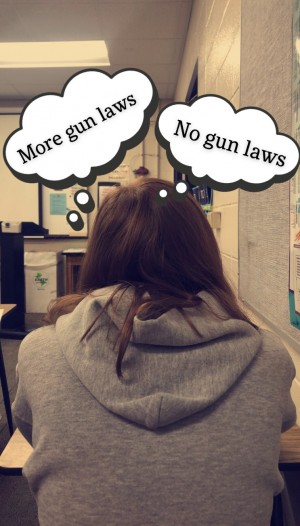Supreme Court case should not use Second Amendment as basis to repeal gun legislation
December 9, 2019
Gun legislation is a contested issue, and for the first time in almost a century, the debate has returned to the Supreme Court of the United States (SCOTUS). This case has the dangerous potential to undo the forward progress made in gun legislation.
The case is the result of a New York Law restricting the transportation of firearms being challenged by the New York State Rifle & Pistol Association (NYSRPA). The law, which prevented gun owners from transporting their guns outside of city limits, has since been repealed. The Supreme Court, however, is still hearing the case.
For gun rights activists, the case has the potential to extend the power of the Second Amendment through lifting other gun carry and transport restrictions. According to Adam Winkler, a constitutional law professor at UCLA, “such a ruling could result in many more gun control laws being struck down.” This result would be an inappropriate application of a written amendment to the modern world.
While the “right to bear arms” is often quoted, the Second Amendment actually states, “A well regulated Militia, being necessary to the security of a free State, the right of the people to keep and bear Arms, shall not be infringed.” In a time when fear of the government overpowering the people ran rampant, people were granted the right to organize a militia.
The founding fathers wrote based on issues and technology that were prevalent after the revolution, new concerns have risen with changing times.
As the Constitution is referenced frequently in debates over gun rights, many people conveniently forget that writing from over 200 years ago is not guaranteed to be applicable today. The same Constitution that spoke of bearing arms also protected slavery and even counted those enslaved as three-fifths of a person. The issues with these causes were recognized, and ratified. It wasn’t an easy process, but it was necessary.
While allowing the people to form militias may not provoke the same moral issues as slavery, this part of the Constituion should not be interpreted as the right to unlimited gun ownership.
In the time period when the Second Amendment was written, typical firearms could only fire about three times a minute, a vast difference from guns available for purchase today. In addition to the different capabilities of previous firearms, similar issues with mass shootings were also not present.
For senior Brenna Morley, this case does not belong in the Supreme Court. “People make the same arguments about repealing gun restrictions,” she said. “It’s time to stop referencing an old piece of legislation and progress forward.”
In the ongoing debate about gun legislation, along with the current Supreme Court case, the Second Amendment is bound to be referenced more. This piece of writing should not be the basis of determining gun legislation; it is a law of the past that should not determine the path of the future.






